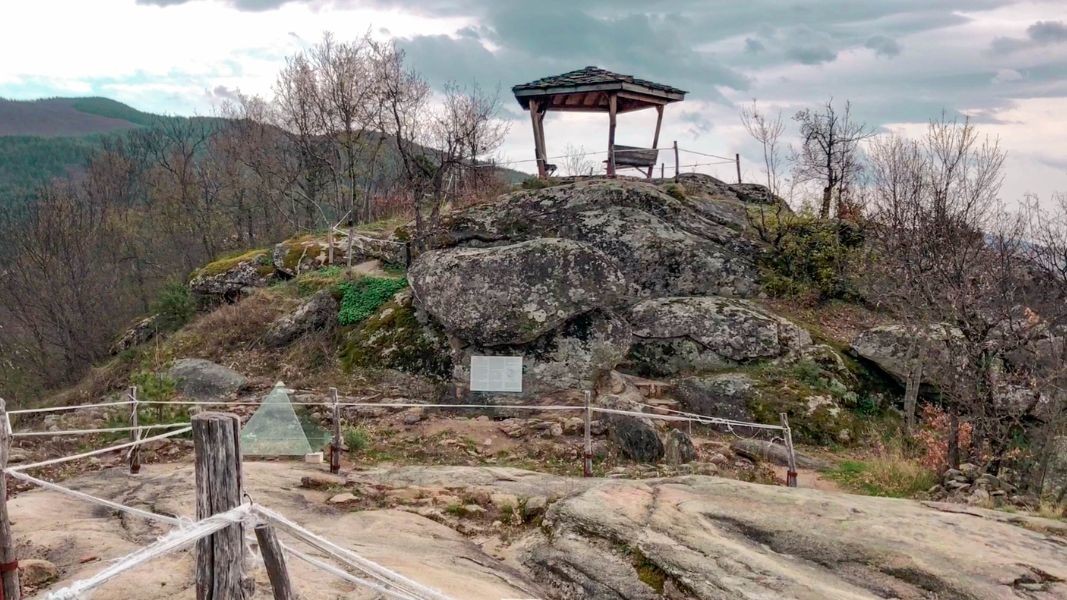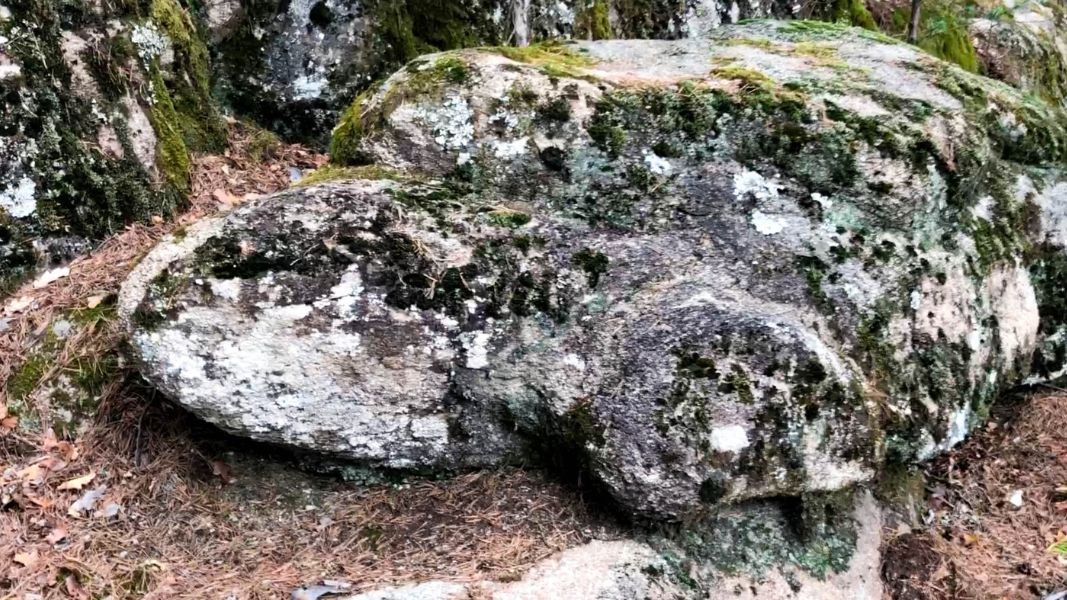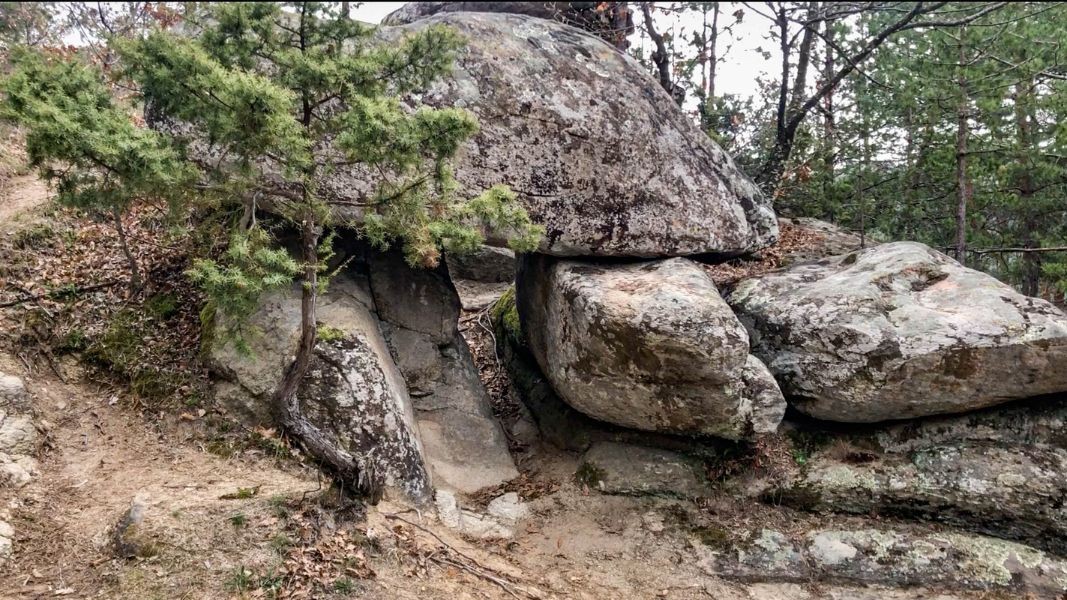The Gradishte locality in the Western Rhodopes has the most peculiar rock formations: silhouettes of people, human faces, animal shapes, some of them additionally carved by the hand of ancient masters 7 thousand years ago.
Today, these curious giant sculptures are accessible via a tourist trail. The area is known as the Gradishte Historical Landscape Park. As you walk along the path, which offers breathtaking views of the Rhodope Mountains and the Pirin Mountains beyond, turtles, birds, fish, human faces and mythical creatures nestle between the rocks, conjuring up strange images in one's imagination. According to researchers, it is a very ancient sanctuary, covering an area of 124 acres.
The most striking stone figure is that of The Head - a very clearly outlined giant stone face in profile, gazing into eternity. The contours are flawless and unmistakably reveal human craftsmanship. According to Prof. Vassil Markov, head of the Department of Ancient Cultures at the South-West Neofit Rilski University, it is the symbolic image of the Thracian god Sabazius. At the top of The Head, archaeologists found traces of a cult hearth where the Thracians performed their rituals. "There are two other large human heads on the territory of the Gradishte. We can't date them precisely because they don't belong to a specific cultural layer, but they probably date from the Late Chalcolithic (4800 - 4000 BC)," says Prof. Vassil Markov, adding that:

"Turtles are the most numerous silhouettes and images we find. At the end of the prehistoric era, the turtle was a symbol of the Great Mother Goddess, or more precisely, her zoomorphic image. The sanctuary also contains a monumental throne carved into the rock, as well as a star chart made up of small "bowls" carved into the rock, which we call altars. They bear witness to the astronomical knowledge of the Thracians, who observed the sky from the sacred space of the sanctuary".

(We will take you to the Gradishte sanctuary, located 8 km from the ethnographic village of Dolen, at the 5.21 minute mark of the video report. For automatic translation of the subtitles, press "Settings" below.)
In antiquity, the Thracians were famous for being able to make immortal gods out of mortals, says Professor Markov. According to him, the sanctuary was used for "immortalisation". This is evidenced by the crawl-hole rocks (proviralki) on its territory, which are still used by Christians and Muslims living in nearby villages. The whole ritual is accompanied by chants and elaborate rites supposedly inherited from the Thracians.

"By the ritual passage through the rock-hole, the participant in the cult abandons his/her old mortal self and, by coming out "on the other side of this world" or on the rock arch, he/she acquires a new essence of an immortal mythological persona. This is now preserved in the folk rite of crawling through. The sick man puts on an old garment over a new one, and after passing through the stone arch, he discards his old garment by hanging it on the rock, i.e., he becomes a "new healthy man," says Prof. Markov in conclusion.

It is assumed that the sanctuary was most intensively used for religious purposes in the 3rd-2nd centuries BC, while the most recent traces of human presence on the Gradiste date back to the Roman period (3rd-4th centuries AD).
For the second year, a series of bilateral business meetings in a “roadshow” took place in Germany, 11-14 November, between German and Bulgarian representatives of the tourist industry for promoting Bulgaria, the Bulgarian embassy in Berlin has..
Veliko Tarnovo is the town with the biggest number of cultural and historical landmarks in Bulgaria. Every Bulgarian feels a sense of pride upon setting foot in the medieval Bulgarian capital while foreigners are fascinated by its architecture,..
Bansko has been recognized as one of the most desired destinations during the World Travel Market London. The resort town has entered the top 10 of Lonely Planet’s ranking "Best in Travel 2025". "This is another well-deserved recognition for our..

+359 2 9336 661
